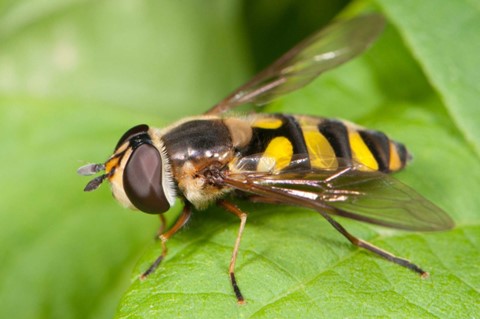Flower flies, also known as hoverflies, play an essential role in pollinating plants. While other pollinators like bees are declining, the status of flower flies in different regions is not well-known. In a newly published study, NatureServe teamed up with the Atlantic Canada Conservation Data Centre, New York Natural Heritage Program, and Carleton University to assess the conservation status of flower flies in Northeastern North America. Using various sources of data, including field surveys and citizen science records, it was found that at least 11 species are at risk of extinction across their entire range, while 267 species have a lower risk. Based on the available information, approximately 4% of species are at risk of extinction (range, 3-17%). The broad geographical ranges of most species likely contribute to their lower risk of imperilment compared to flower fly species in Europe, where a much more significant percentage of the fauna is at risk.
